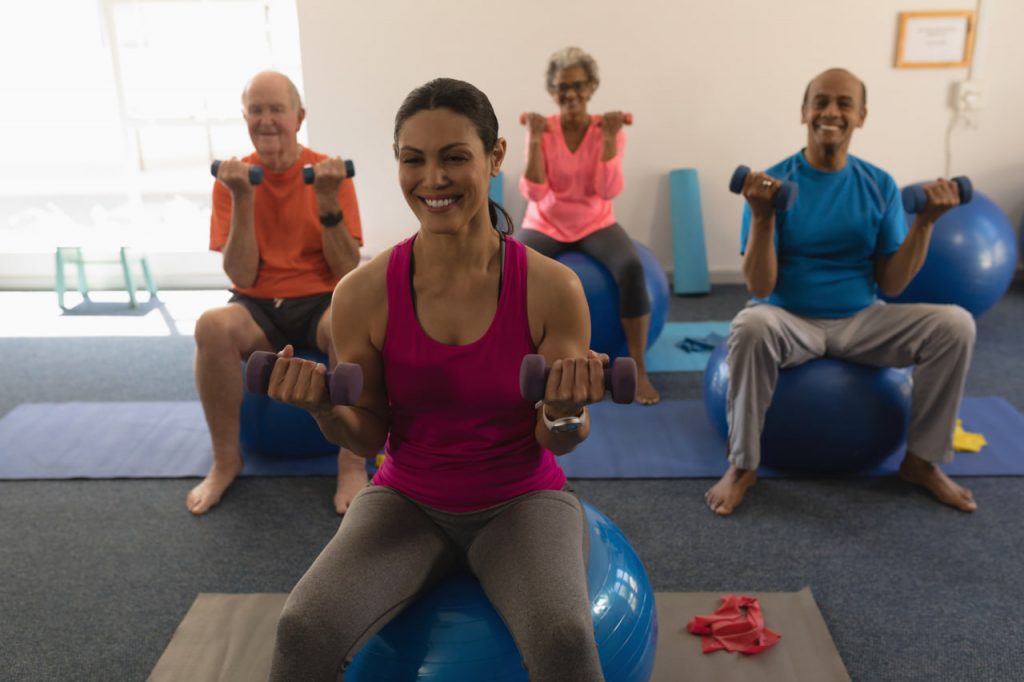Getting back into exercise after the age of 60 — or starting for the first time — can feel intimidating, especially if it’s been a while since you’ve focused on physical activity. But here’s the good news: movement doesn’t have to be intense to be beneficial. In fact, gentle exercises that prioritize safety, balance, and mobility are often the most effective for older adults.
Whether your goal is to regain energy, improve balance, stay independent, or simply feel better in your body, low-impact movement is a great place to begin. Let’s explore five simple exercises that are safe, effective, and designed specifically with seniors in mind.
1. Seated Leg Lifts
Why it helps:
This exercise strengthens the muscles in your thighs and hips, which are crucial for walking, climbing stairs, and preventing falls.
How to do it:
Sit in a sturdy chair with your back straight and feet flat on the ground. Slowly lift one leg until it is straight and parallel to the floor. Hold for a few seconds, then lower it back down. Repeat 8–10 times per leg. Go slowly, and don’t forget to breathe.
Tip: If your leg shakes or feels tired quickly, that’s normal — your muscles are being activated.
2. Wall Push-Ups
Why it helps:
Wall push-ups improve upper body strength, especially in the arms, shoulders, and chest, without putting strain on your joints like floor push-ups can.
How to do it:
Stand about arm’s length away from a wall. Place your palms flat on the wall at shoulder height. Keeping your body in a straight line, slowly bend your elbows and bring your chest toward the wall. Then push back to the starting position. Start with 8–10 repetitions, and increase as you build strength.
Tip: Keep your feet flat and your back straight to avoid strain.
3. Heel-to-Toe Walking
Why it helps:
This simple balance exercise helps strengthen the muscles that support coordination and stability — essential for reducing the risk of falls.
How to do it:
Stand upright near a wall or chair for support. Step one foot directly in front of the other, so the heel of your front foot touches the toes of your back foot. Take 10–20 slow, controlled steps forward. Keep your eyes focused ahead, and take your time.
Tip: If you feel unsteady, rest one hand lightly against a wall for support.
4. Gentle Neck and Shoulder Stretches
Why it helps:
As we age, tension tends to build up in the neck and shoulders, especially if we spend a lot of time sitting. Gentle stretching helps relieve stiffness and improve posture.
How to do it:
Sit or stand tall. Slowly tilt your head to one side, bringing your ear toward your shoulder. Hold for 10–15 seconds, then switch sides. For shoulders, try slow circular rolls forward and backward. Repeat each movement 5–10 times.
Tip: These stretches are especially helpful first thing in the morning or before bed.
5. Seated Marching
Why it helps:
This low-impact cardio exercise helps improve circulation, increase heart rate slightly, and strengthen hip flexors and core muscles.
How to do it:
Sit upright in a sturdy chair with both feet flat. Begin lifting one knee toward your chest, then lower it and lift the other. Alternate legs as if marching in place. Continue for 30–60 seconds, or as long as is comfortable.
Tip: Swing your arms gently at your sides to engage more of your body.
Getting Started: A Few Reminders
- Start slow. If you haven’t exercised in a while, ease into it. Even 5–10 minutes a day is a great start.
- Listen to your body. Mild muscle soreness is normal, but pain is not. If something doesn’t feel right, stop and consult a professional.
- Stay consistent. Progress comes with regularity. It’s okay to go at your own pace — what matters most is that you keep moving.
- Use support if needed. A chair, wall, or even a walking stick can help you feel more stable as you begin.

